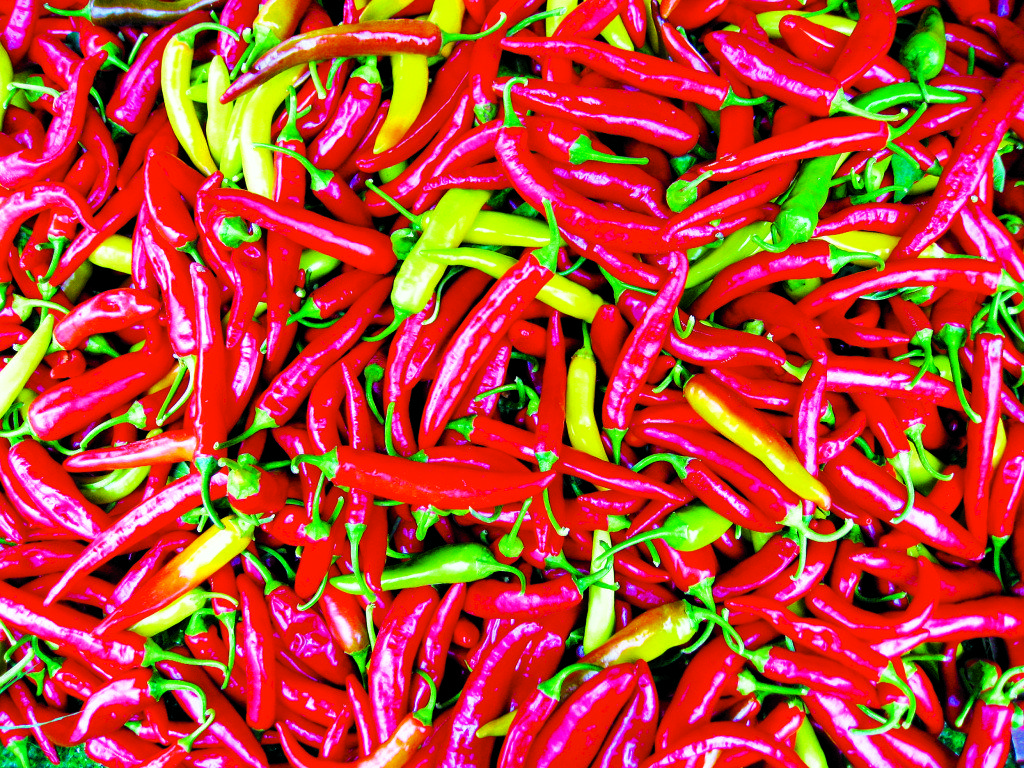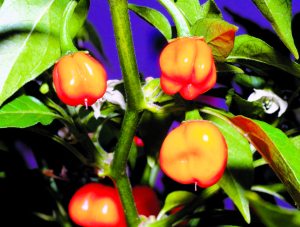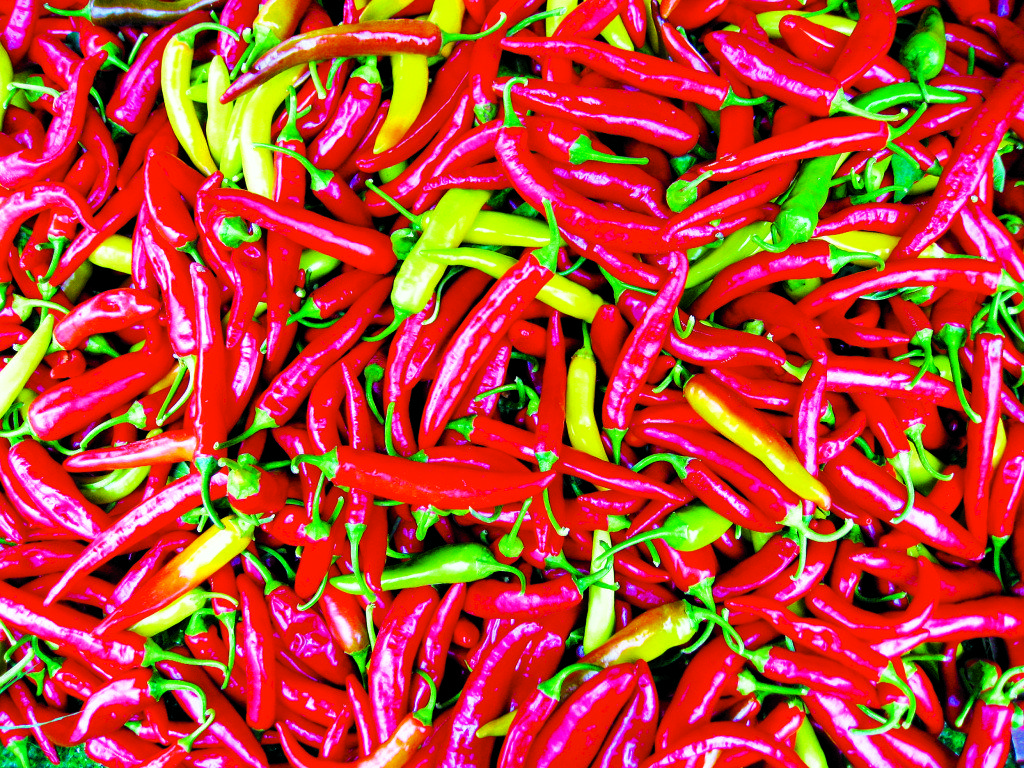Many gardeners were surprised to learn that the International Herb Association has designated Capsicum ssp. (chili peppers) as the Herb of the Year for 2016. Capsicum ssp. is not the first plant one thinks of when you mention herbs, but it does meet the definition of a plant that benefits humanity and is valued for its medicinal properties and flavor. The committee that has chosen the herb of the year explains that Capsicum ssp. exemplifies all the traits in the categories necessary to be designated as the Herb of the Year: medicinal, culinary and decorative.

Photographed at the Civic Center Farmer’s Market
To clear up any confusion, Capsicum ssp. (chili peppers) contains capsaicin, which is a chemical that produces a strong, burning sensation in the mouth. Capsaicin is an odorless and tasteless antioxidant that occurs naturally in all capsicum plants. The Capsicum annuum (without capsaicin) is a sweet pepper, which can be green, yellow or red but is not the Herb of the Year.
It is interesting to note that archaeologists have found remains of peppers in Mexico that date from 3000 B.C. Historically, chili peppers have been used as money as well as spice, medicine and for pest control. More recently, capsaicin has been used in research to study its impact on cancer cells. In addition, peppers of all types are known to be a good source of vitamins A and C, potassium and iron.
Be cautious, however, because only one drop of capsaicin can blister your skin. Washing with milk offers some relief from the heat of the blistering since it contains fat-dissolving substances that can neutralize the burning effects of the capsaicin. Any time you handle hot peppers, remember to protect yourself. Never chop chili pepper without using rubber gloves or rub your eyes after cutting them. Interestingly, birds are unaffected by the capsaicinoids in chili peppers seeds that they eat and therefore are responsible for spreading pepper seeds throughout their range.
If you want to grow peppers, you should give it a try because they are easy to grow. Much like tomatoes, they like rich soil, full sun and regular watering. They start setting fruit as soon as the plant matures, but the harvest is most plentiful in the fall. Peppers need bees and other pollinators to pollinate their flowers in order for the peppers to form, therefore, do not cover the plants with protective row fabric because then the flowers will not be pollinated. Peppers do like a regular feeding with a spraying of liquid fertilizers, such as seaweed. Pinch out the top of the plants to encourage bushy growth with lots of side shoots and locate plants where they will be protected against strong winds.

The Scoville method, developed in 1912, measures the heat levels in chili peppers by measuring the capsaicin percentage in the peppers with highly sophisticated equipment. The scale range is between 1 and 10, with 10 being the hottest, though this method is arguably subjective. The complexity of flavors has a vast range; the tastes have been described as tobacco-like and smoky, sweet and fruity, sharp and bright or green and earthy.
Chili peppers readily cross-pollinate and create new cultivars and varieties. This explains why only a handful of original varieties have hybridized into hundreds of cultivars grown throughout the world. There are more than 10,000 varieties of chili peppers and if you grow sweet and hot peppers, they may cross pollinate and produce some interesting surprises. Buying virus resistant varieties would be a good idea if you are growing your own for the first time. Picking your peppers off the plants tends to encourage new flowers and fruit. Give it a try. Enjoy your blooming gardens.
Josephine Borut is currently on the Board of Directors of the Long Island Horticultural Society and is a past board member of the Long Island Rose Society. She is a current member of The American Rose Society, The Herb Society and The Long Island Horticultural Society. The Long Island Horticultural Society meets on Sunday afternoons, with doors opening at 1:30 p.m. in the conference center at Planting Fields Arboretum in Oyster Bay. The LIHS does not meet during July or August and will resume on Sept. 18. The speaker is Rick Mikula and his topic will be Beautiful Butterflies. For more information, go to www.lihort.org.


































